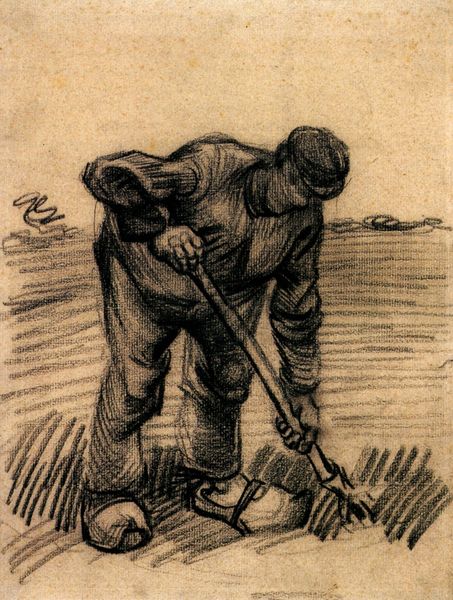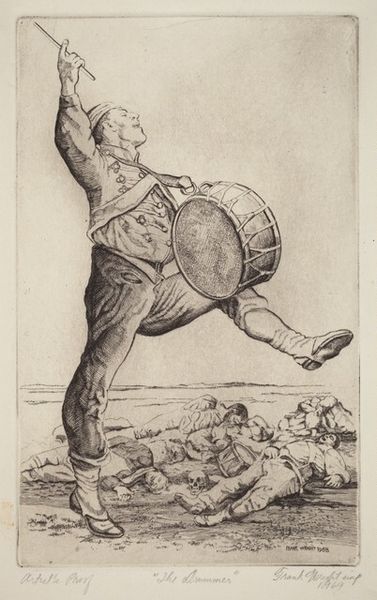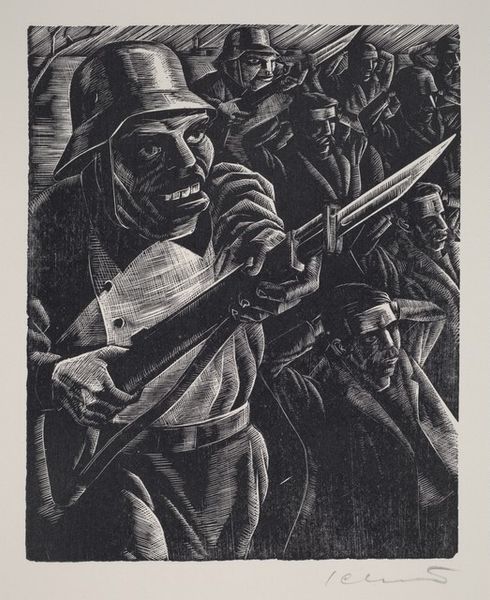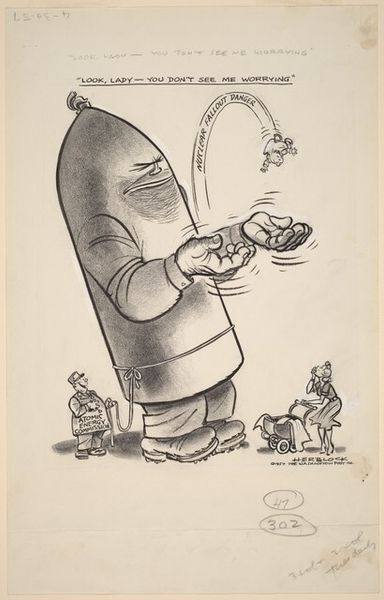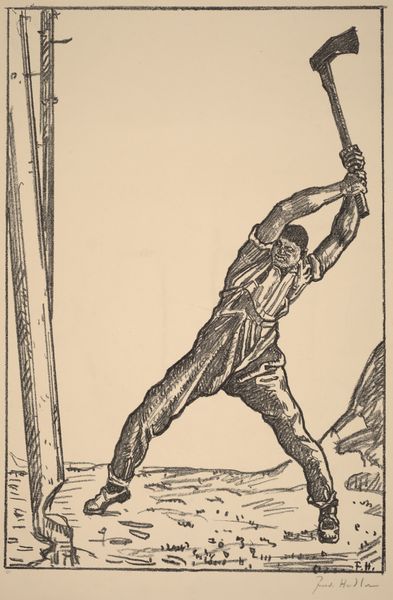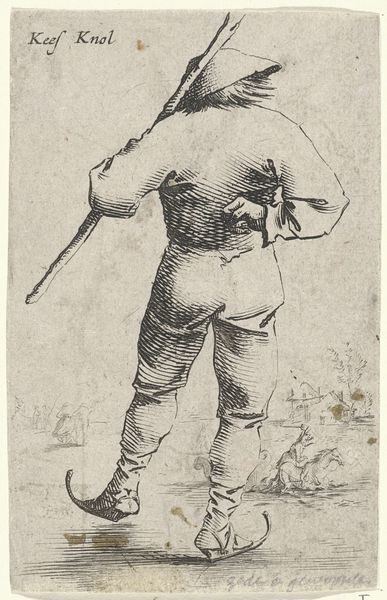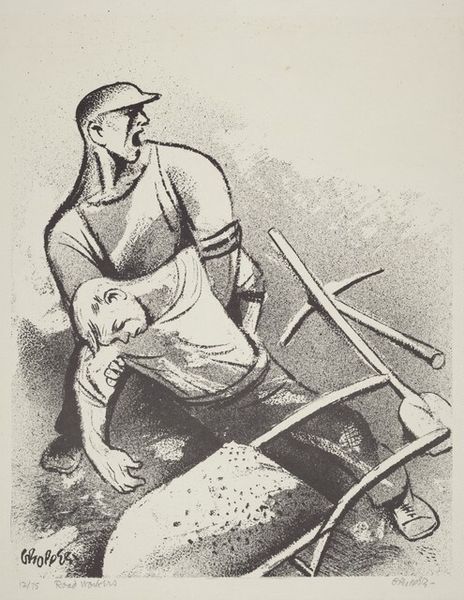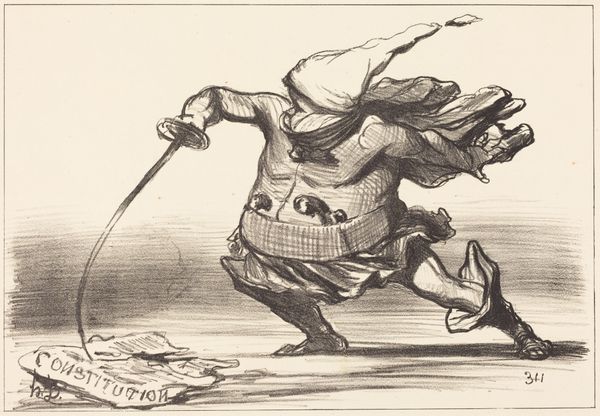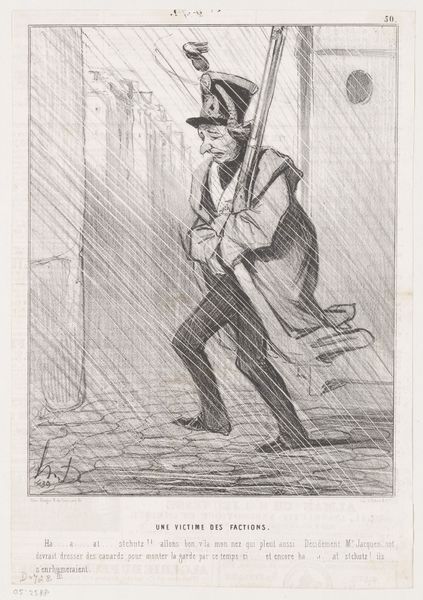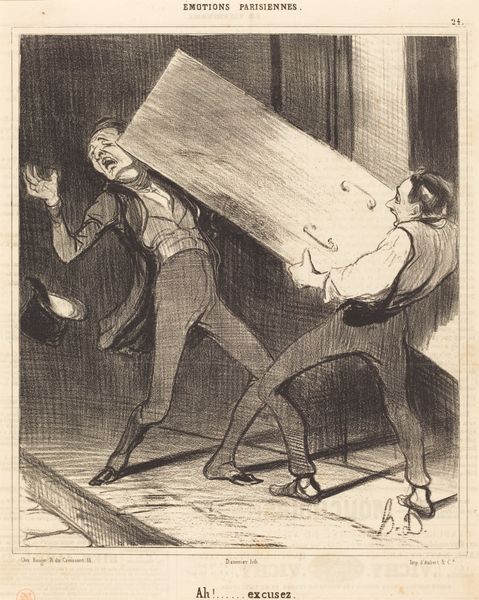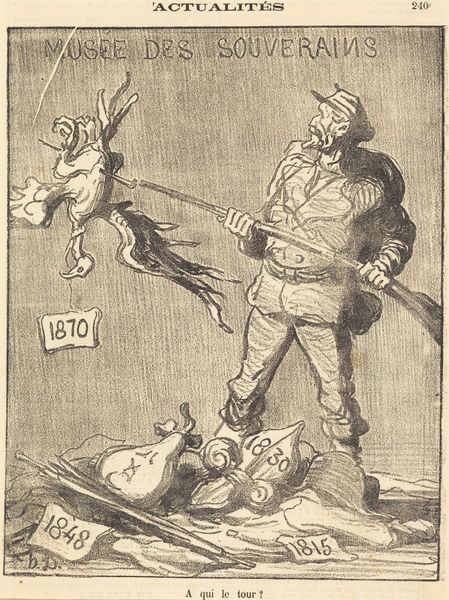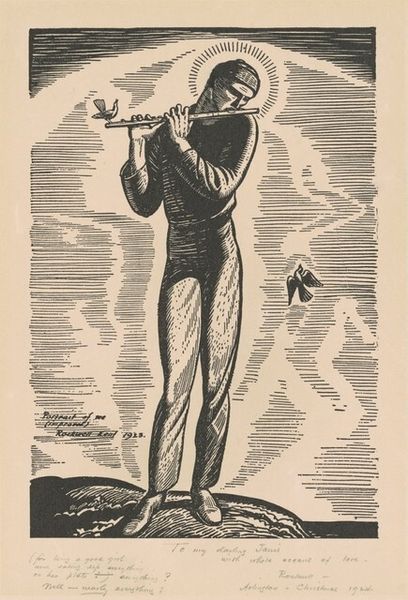
drawing, charcoal
#
drawing
#
toned paper
#
narrative-art
#
caricature
#
pencil sketch
#
caricature
#
cartoon sketch
#
social-realism
#
personal sketchbook
#
expressionism
#
sketchbook drawing
#
portrait drawing
#
watercolour illustration
#
charcoal
#
cartoon carciture
#
sketchbook art
Dimensions: overall (approximate): 43.6 x 32.7 cm (17 3/16 x 12 7/8 in.)
Copyright: National Gallery of Art: CC0 1.0
Curator: This drawing, rendered in charcoal on toned paper, is titled "Strike" and is attributed to William Gropper, circa 1920s to 1930s. What strikes you initially? Editor: Energy. Pure, raw, righteous energy. I can almost hear the shouts, feel the ground vibrating beneath his feet. The tilt of his body implies powerful movement. You're right there with him! Curator: Indeed. Gropper employs expressive line work and tonal contrasts to convey a sense of urgency and collective action. Note how the flag, bearing the titular word "Strike", acts as a visual focal point, a textual banner driving the narrative. The artist does a superb job capturing the feeling of the movement, its collective identity and purpose, no? Editor: Absolutely. The factory chimneys looming in the background feel so ominous, dwarfing those little buildings—classic Gropper. Is this from one of his sketchbooks? It has that immediate feel to it. Almost like capturing a moment about to explode into violence. And his face, contorted in rage. Magnificent. I find that caricature lends a potent visual tool here. The simplified forms really amplify the sentiment. Curator: Caricature does perform a key role, exaggerating the physical attributes of the protagonist, underscoring the intensity of his commitment. The choice of charcoal further contributes to the rough, almost unrefined aesthetic, consistent with the subject matter. He looks the picture of "working man." Editor: And beyond just technique, the subject, you know. We can still feel it. You see those historical subjects echoing down to today—a lineage of rebellion, of sticking up for what's right. Timeless, really. It brings the past into conversation with the present. Curator: I appreciate your reading that timeless aspect. It invites reflection on the cyclical nature of labor struggles and social movements and art about them. What began in Gropper's moment endures, finding echoes throughout art and activism across eras. Editor: Yeah! I think it has a power that really makes it live beyond the era in which he was sketching away and makes its relevance alive today. Curator: It’s the visual articulation of shared feelings of frustration and hopes across generations, I think. Very evocative, I have to say.
Comments
No comments
Be the first to comment and join the conversation on the ultimate creative platform.
